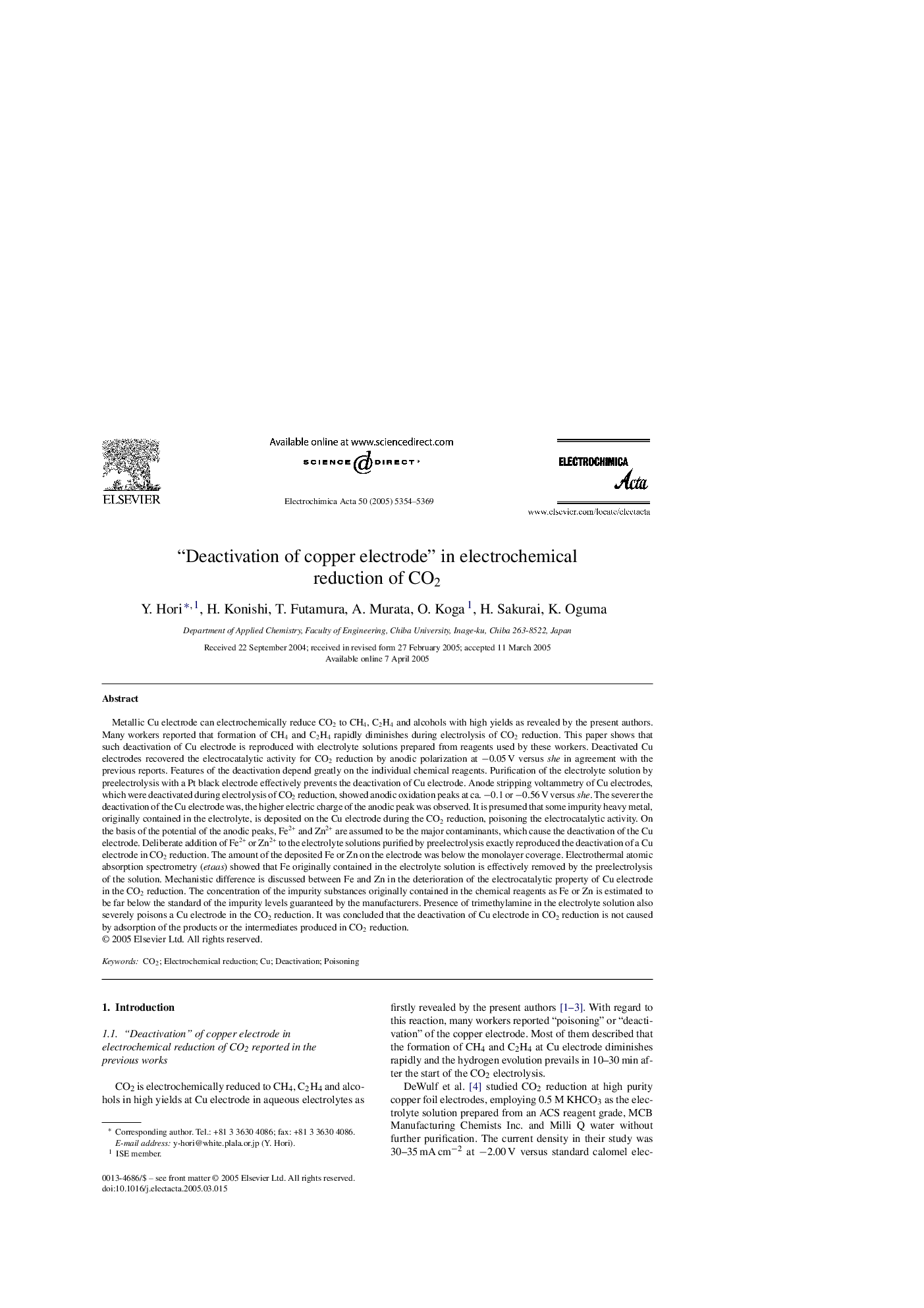| Article ID | Journal | Published Year | Pages | File Type |
|---|---|---|---|---|
| 196444 | Electrochimica Acta | 2005 | 16 Pages |
Metallic Cu electrode can electrochemically reduce CO2 to CH4, C2H4 and alcohols with high yields as revealed by the present authors. Many workers reported that formation of CH4 and C2H4 rapidly diminishes during electrolysis of CO2 reduction. This paper shows that such deactivation of Cu electrode is reproduced with electrolyte solutions prepared from reagents used by these workers. Deactivated Cu electrodes recovered the electrocatalytic activity for CO2 reduction by anodic polarization at −0.05 V versus she in agreement with the previous reports. Features of the deactivation depend greatly on the individual chemical reagents. Purification of the electrolyte solution by preelectrolysis with a Pt black electrode effectively prevents the deactivation of Cu electrode. Anode stripping voltammetry of Cu electrodes, which were deactivated during electrolysis of CO2 reduction, showed anodic oxidation peaks at ca. −0.1 or −0.56 V versus she. The severer the deactivation of the Cu electrode was, the higher electric charge of the anodic peak was observed. It is presumed that some impurity heavy metal, originally contained in the electrolyte, is deposited on the Cu electrode during the CO2 reduction, poisoning the electrocatalytic activity. On the basis of the potential of the anodic peaks, Fe2+ and Zn2+ are assumed to be the major contaminants, which cause the deactivation of the Cu electrode. Deliberate addition of Fe2+ or Zn2+ to the electrolyte solutions purified by preelectrolysis exactly reproduced the deactivation of a Cu electrode in CO2 reduction. The amount of the deposited Fe or Zn on the electrode was below the monolayer coverage. Electrothermal atomic absorption spectrometry (etaas) showed that Fe originally contained in the electrolyte solution is effectively removed by the preelectrolysis of the solution. Mechanistic difference is discussed between Fe and Zn in the deterioration of the electrocatalytic property of Cu electrode in the CO2 reduction. The concentration of the impurity substances originally contained in the chemical reagents as Fe or Zn is estimated to be far below the standard of the impurity levels guaranteed by the manufacturers. Presence of trimethylamine in the electrolyte solution also severely poisons a Cu electrode in the CO2 reduction. It was concluded that the deactivation of Cu electrode in CO2 reduction is not caused by adsorption of the products or the intermediates produced in CO2 reduction.
